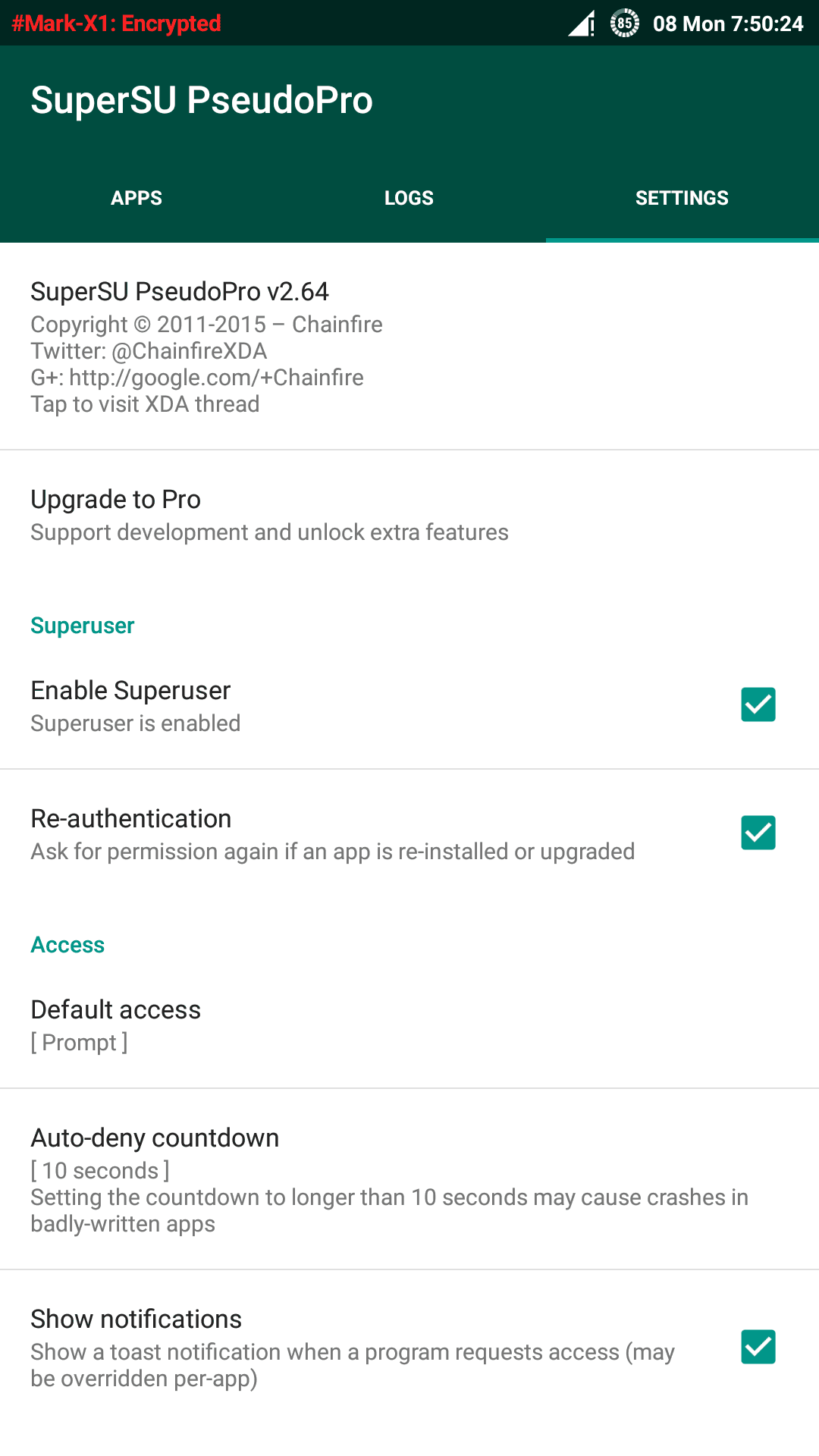Updated April 14, 2023
Introduction to Android app development for beginners
Android app development for beginners can be due to several reasons. I started this because I was not always satisfied with the feedback I got from developers when I used to report bugs or any other updates. You mostly have to rely on the developer for every other thing. Besides, after the recent issue with Google Play Store, where any developer can upload an App showing primary system access and can, later on, change the permissions without any notification or update is a severe security issue I faced.
Then, I remembered something. I used to use Windows as my daily driver. Still, due to the infinite amount of bugs in Windows 8 and 8.1, extreme security issues faced by Windows 7, and incompatibility of many Android app development software in Windows 10, I had to switch to Linux. But once I switched, there was no going back. Everything I did in Windows could be done in Linux. As a matter of fact, I had more freedom with Linux in customizing almost anything, which I did not have in Windows due to the graphic user interface limitations. And this made me think, why not learn Android app development for beginners? Trust me; it won’t be that difficult; it was an incredible journey learning Android app development for beginners, debugging it, and keeping it personal. So, let’s look at how to develop outstanding Android app development for beginners.
Android App Development for Beginners – Pre-requisites
So, before you directly proceed to Android app development for beginners, you need to keep a few things in mind. First, which environment will we use for Android app development for beginners? You can use the basic Java and Android SDK, XML, and stuff. Or you can use Python to compile an app and later cross-compile it into a jar file or convert it into an apk. As for now, I would suggest using the default Android Studio and installing the latest SDK tools using the SDK Manager.
Directly getting started with Android app development for beginners is, however, something that I would not suggest. I would request you understand the basics of Linux first. Although Android is not fully Linux, only a part is Linux, like the kernel and the structure and stuff; it would still be easier to get going once you understand the Linux terminal. The primary reason for that is that even if you start with Android App Development for beginners directly, you will reach a certain point when you would need to learn to give permissions to Linux, debug it using the local terminal inside of Android, and similar stuff. This especially comes in handy if you plan to develop apps requiring System or root access.
I am Root!
I am not rehearsing a dialogue from the movie Guardians of the Galaxy. What I am talking about here is root access. By default, the Android app development tutorial will always have user access. You may wonder why you need to know this. You would require root access if you plan to develop multipurpose applications like File Explorers or a System cache optimization app. Root has many forms. It is also known as SuperUser or just Su. In Linux, sudo is different from the default so. But we developers tend to mix up the same in Android app development for beginners. You would require Root permission-granting App, something like Chainfire’s SuperSU. Once you have root access, you can modify the system access files, storage modifications, and more. So, since we know enough about Android app development tutorials, let’s take a step further in Android app development for beginners.
Procedure
Before you start Android app development and learning your first Application, try writing the following things down as to what your target is exactly:
- Type of UI
- Required Access to Run the App
- Supporting Devices and Architecture(x64 or x86)
- Supporting ROMS, firmware, and flavors as to whether it’s Lollipop, KitKat, or Marsh mellow.
- Where will it save the data, on an external sd card or internal?
- How would it interact with other apps if it would interact?
- Whether your apps will support User logging or the use of other APIs like that of Google Maps or similar stuff
- How would it run in the background? In cache or Memory?
So, after you have the above things sorted out, we can proceed with further Android app development for beginners. The above pointers I mentioned are the basis for all the Android app development software. Suppose you are trying to develop some Android app development software for Security and Privacy. In that case, you would need to note down a few more things like types of encryption, where it would be stored, and whether it can be cracked by using Brute force or other attacks. So, you see that building an Android app development software is not a piece of cake. It is, however, amazing to learn how to make. I was more interested in breaking applications rather than using them. But that won’t be everyone’s choice, however. Nuf said, let’s look at how to get started with Actual android app development for beginners.
Need to Know Terminologies before getting Started with Android app development learning
The following are the same:
Activity
This is the first step you should know before starting with Android app development for beginners. Activities are the logistics of the Application, which provides a screen where the user can interact to do something, for example, dialing a call, taking a picture, sending a mail, or other similar activities. Every other activity has a given window where it draws its user interface. This window uses the whole screen but can be smaller depending on the App or even laid above other windows.
Usually, an application comprises many activities independently bound to each other. And thus, one activity out of those multiple activities is termed the ‘main’ activity, which the user interacts with when using the Application. All activities can start each other to perform various actions. Every time a new activity is created, the last activity is terminated without the user knowing that the System saves the activity as a cache in a stack known as BackStack. And whenever a new activity is started, it is stuffed into the back stack. This stack runs on the basic LIFO methods (last in, first out). Thus, when the user’s work is done and he presses the back button, it is pushed back to the stack, and the activity before that resumes its play.
API Level
You should know this second level before starting Android app development learning. API or Application Program Interface Level is a numeric value with a unique identity. Every platform is different depending on whether the two platforms are not joined. The essential Android app development learning would provide a platform to give an API that other applications can use to interact with the existing Android system underlying the device. Every version of the Android platform, like Lollipop 5.0 and 5.15.2, includes upgrades to the Application framework it supports.
Upgrades to the framework application are architected so that even the latest API remains compatible with previous API versions. The reason for this is that most of the modifications in the API are additionally added and introduced as new or replaced. Thus, even if most of the parts of the API are updated, the older parts are deprecated but are still kept so that dependent applications can still use them. In extreme cases, parts of the API are either modified or removed. This is only done to ensure the importance of Application or System Security. The Android app development software carries forward API parts from all other platforms and components.
As mentioned above, the Android platform uses a specific numerical number known as the API Level to refer to the framework API it uses. Every Android platform supports only one API Level, besides having support for all previous versions of API Levels (till API Level 1). The initial release of the Android platform Base had API Level 1, and subsequent releases have incremented the API Level by one.
Following is the list of current API levels to date:
| Platform | API Level |
| Android 6.0 Marshmallow | 23 |
| Android 5.1 Lollipop MR1 | 22 |
| Android 5.0 Lollipop | 21 |
| Android 4.4W Kitkat Watch | 20 |
| Android 4.4 KitKat | 19 |
| Android 4.3 Jellybean MR2 | 18 |
| Android 4.2 and 4.2.2 Jellybean MR1 | 17 |
| Android 4.1 and 4.1.1 Jellybean | 16 |
| Android 4.0.3 and 4.0.4 Ice cream Sandwich MR1 | 15 |
| Android 4.0, 4.0.1 and 4.0.2 Ice cream Sandwich | 14 |
| Android 3.2 HoneyComb | 13 |
The list continues till the Android 1.0 Base
App Manifestation
All applications have a Manifest file, an XML file with the AndroidManifest file name in its SuperSu root directory. This specific file contains essential information related to your Android app development software which gives information to the Android System. These are the third steps before starting Android app development for beginners. This information is the specific code that all the systems must require to run any Application code. It defines the Java package needed to run the Application. This name, i.e., the Java package, is a unique Android app development software identity. The Java component refers to the various parts of the Application, such as the running service, activity, broadcasting, and more, that make up the Application. It differentiates the types of classes that execute each of these specific parts or components and prints what they can do; my point is like saying the messages they work on.
This tells the System what these components do and when and why they must be executed. It manages only those processes that are necessary for the Application to run. Then, the developer sets the required permissions for the Application to ensure that it doesn’t access private documents or other protected components of the API and avoids activating other applications, which can consume Memory and resources unnecessarily. It also restricts permissions to other applications if it needs to interact with others. These things are only in the manifestation file when the developer develops the Application. Finally, it is removed before the Application is published in the store or elsewhere.
Recommended courses
- Online Training on Maven and ANT Tools
- c Sharp Programming Courses
- Online Java Training
- Online Training on Digital Electronics
Android Emulator
This is the fourth step you should know before starting with Android app development software. The Android SDK package consists of an emulator that works like an Android cell phone which runs on your computer. You can configure the emulator with various screen sizes, platforms, and architectures to ensure that everything you develop can be thoroughly tested and debugged if necessary. You can try everything you can do on an actual device without even using a physical device. In short, it works like a Vmware workstation or a virtual box in Windows. You can configure various features on the Android emulator, such as sending and receiving SMS messages, making phone calls, accessing the internet, running apps and games, and more. This is what an Android emulator for a tablet looks like:
Image source: pixabay.com
Resource Objects
One should always try to make sure that they externalize the App’s resources. Externalization refers to independently storing strings from your code, images, logs, and other similar properties. Besides these, make sure that you introduce alternative resources for different device configurations by dividing them into groups in a specific directory. Executing these programs requires the Android System to use the appropriate resource-based configuration. A simple example could be that different devices need different screen sizes, and various languages must be set for other regions. These are the last steps before starting with Android app development for beginners.
So, these are a few things you must remember before starting Android app development for beginners. Rest all comes with time and experience. Most people get stuck in the manifest file part because allowing permissions to run itself is fine, but when interacting with other apps, the developers need to be more cautious.
Recommended Articles
This has been a guide to Android app development for beginners. Here we discuss the Procedure and Pre-requisites of Android app development for beginners.







